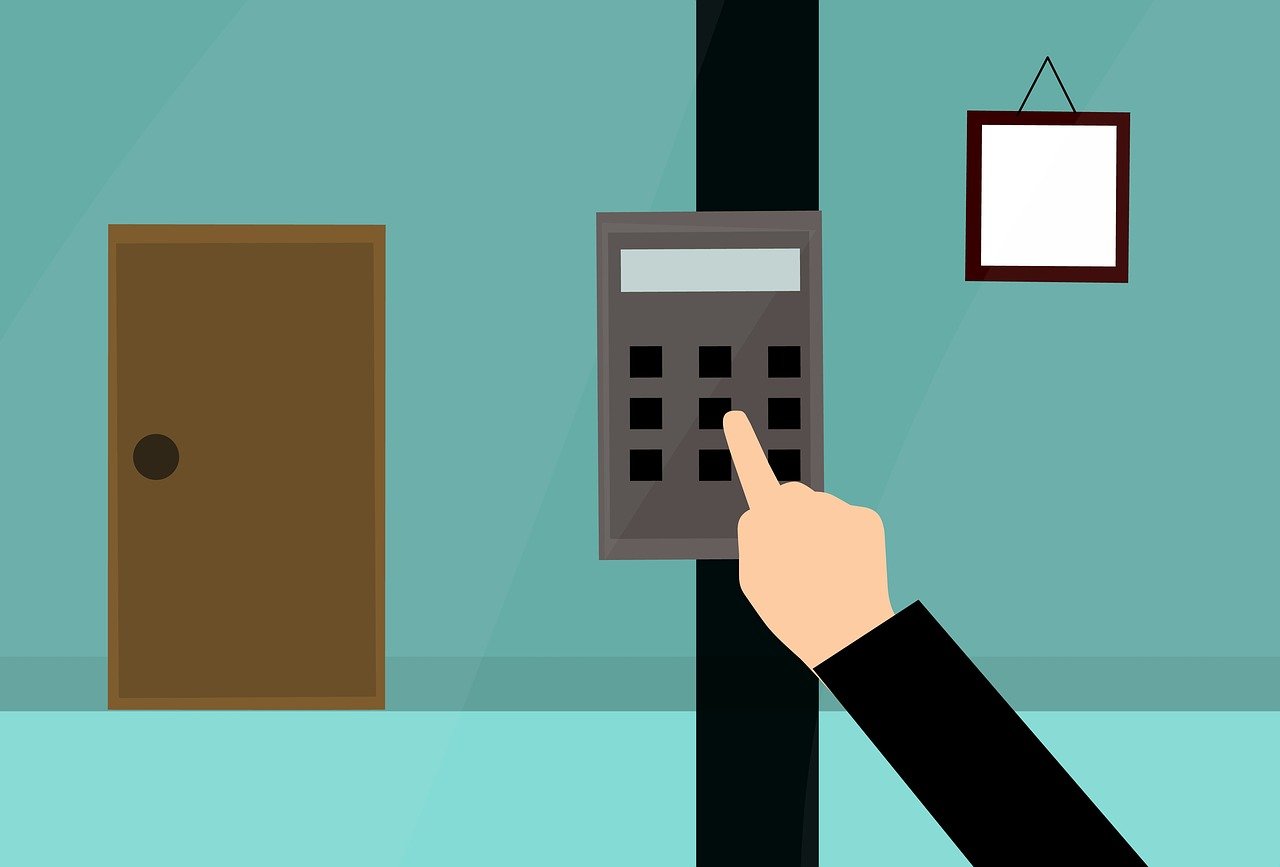Access control systems form the backbone of modern security infrastructure, protecting everything from corporate offices to residential buildings. As technology evolves, businesses face a critical decision: should they stick with traditional keycards or embrace mobile credentials? This comprehensive analysis examines both options to help you determine which access control commercial lock solution offers superior security for your organization.
The choice between mobile credentials and keycards isn't just about convenience—it's about protecting your assets, employees, and sensitive information. Each system brings distinct advantages and potential vulnerabilities that could impact your overall security posture.
Understanding Mobile Credentials
Mobile credentials transform smartphones into digital keys, using technologies like Bluetooth Low Energy (BLE), Near Field Communication (NFC), or Wi-Fi to communicate with access control readers. Users simply tap their phone against a reader or use proximity-based unlocking to gain entry.
How Mobile Credentials Work
The technology behind mobile credentials involves encrypted communication between a mobile app and the access control system. When a user approaches a door, their smartphone sends an encrypted signal containing their unique digital credential. The reader verifies this credential against the access control database before granting or denying access.
Modern mobile credential systems often incorporate multiple authentication factors, including biometric verification through fingerprint or facial recognition, PIN codes, or pattern locks. This multi-layered approach significantly enhances security compared to single-factor authentication methods.
Security Advantages of Mobile Credentials
Mobile credentials offer several compelling security benefits that traditional keycards cannot match. The encryption levels used in mobile systems typically exceed those found in standard keycard technologies, making them extremely difficult to clone or replicate.
Remote management capabilities allow administrators to instantly revoke access when an employee leaves the company or reports a lost device. This immediate response eliminates the security gap that exists when waiting for returned keycards or changing locks.
The integration of biometric authentication adds another security layer. Even if someone gains access to a mobile device, they would still need to bypass the phone's security features to use the credential, creating multiple barriers for unauthorized access.
Potential Vulnerabilities
Despite their advantages, mobile credentials face unique security challenges. Smartphones are complex devices with multiple connectivity options, creating potential attack vectors that don't exist with simple keycards. Malware, outdated operating systems, or compromised apps could potentially affect the security of mobile credentials.
Battery dependency presents another concern. Unlike keycards, mobile credentials require power to function. A dead battery could leave authorized users stranded, though many systems include backup authentication methods to address this issue.
The Keycard Security Landscape
Keycards have served as the standard for access control commercial lock systems for decades. These plastic cards contain embedded chips or magnetic stripes that store credential information, requiring physical contact or proximity to a reader for authentication.
Traditional Keycard Technology
Most modern keycards use RFID (Radio Frequency Identification) technology, storing encrypted data that readers can access from short distances. Higher-end systems employ smart card technology with advanced encryption and the ability to store multiple credentials on a single card.
The simplicity of keycard systems contributes to their reliability. With fewer components and dependencies, keycards typically offer consistent performance across various environmental conditions and don't require software updates or device compatibility considerations.
Security Strengths of Keycards
Keycards excel in specific security scenarios, particularly in environments where digital minimalism is preferred. Their offline nature means they cannot be remotely hacked through internet connections, and they don't store personal information that could be compromised in a data breach.
The physical nature of keycards provides a clear audit trail. Lost or stolen cards are immediately obvious, and the physical exchange of cards creates natural accountability. Many organizations appreciate this tangible aspect of access control.
Production costs for keycards remain relatively low, making them economical for large-scale deployments. The readers required for keycard systems are typically less expensive than those needed for mobile credentials, particularly when retrofitting existing access control commercial lock installations.
Keycard Vulnerabilities
Traditional keycards face several security limitations that mobile credentials can address. Cloning technology for basic RFID cards is widely available, making unauthorized duplication a significant concern. While advanced encryption helps, older systems may use weaker security protocols.
The physical nature of keycards creates security gaps. Lost cards may not be reported immediately, leaving windows of opportunity for unauthorized access. The time required to physically collect and replace cards when employees leave can create security vulnerabilities.
Sharing keycards between employees, while against policy, occurs frequently in practice. This behavior undermines access control systems and makes it difficult to track who accessed specific areas at particular times.

Comparative Security Analysis
When evaluating mobile credentials versus keycards for access control commercial lock applications, several key factors determine which option provides superior security for your specific needs.
Encryption and Data Protection
Mobile credentials generally employ stronger encryption standards than traditional keycards. While basic RFID cards might use simple encryption that can be broken with specialized equipment, mobile credentials benefit from the robust security features built into modern smartphones.
The encryption keys used in mobile systems are typically longer and more complex, making brute force attacks impractical. Additionally, mobile credentials can leverage the smartphone's secure element—a dedicated chip designed to store sensitive information safely.
Authentication Methods
Multi-factor authentication gives mobile credentials a significant advantage. The combination of something you have (the phone), something you know (PIN/password), and something you are (biometrics) creates a robust security framework that keycards cannot match with their single-factor approach.
However, this complexity can also create usability challenges. Users must remember to keep their phones charged and may face delays if biometric authentication fails, requiring backup authentication methods.
Access Management and Control
Mobile credentials excel in dynamic access management scenarios. Administrators can update permissions, revoke access, and monitor usage in real-time through cloud-based management platforms. This capability proves invaluable for organizations with changing staff or complex access requirements.
Keycards require physical collection and reprogramming for access changes, creating administrative overhead and potential security gaps. However, this limitation also means that keycard systems are immune to remote attacks on management systems.
Audit Trails and Monitoring
Both systems can provide comprehensive audit trails, but mobile credentials often offer more detailed information. The data collected can include device information, location services, and behavioral patterns that help identify unusual access attempts.
Keycard systems provide basic access logs but lack the contextual information available through mobile devices. This limitation makes it harder to detect sophisticated security threats or unusual access patterns.
Implementation Considerations
Choosing between mobile credentials and keycards involves more than just security considerations. Implementation factors can significantly impact the effectiveness of either system.
Cost Analysis
Initial deployment costs vary significantly between the two options. Mobile credential systems typically require higher upfront investment in readers and software platforms, but they eliminate ongoing card production and replacement costs.
Keycards involve lower initial costs but generate ongoing expenses for card production, replacement, and administrative overhead. The total cost of ownership depends on factors like employee turnover, card loss rates, and system scale.
User Experience and Adoption
Mobile credentials often provide superior user experience through features like hands-free entry and integration with other smartphone functions. However, they require user education and may face resistance from employees uncomfortable with smartphone-based systems.
Keycards offer familiar, straightforward operation that requires minimal training. The simplicity appeals to organizations with diverse workforce demographics or those preferring traditional security approaches.
Infrastructure Requirements
Mobile credential systems require robust network infrastructure to support real-time authentication and management. Organizations with limited connectivity or strict network security policies may find implementation challenging.
Keycard systems can operate with minimal network requirements, making them suitable for locations with limited connectivity or organizations preferring offline access control commercial lock solutions.
Making the Right Choice for Your Organization
The decision between mobile credentials and keycards depends on your specific security requirements, organizational culture, and technical infrastructure. Organizations prioritizing maximum security and dynamic access management may find mobile credentials more suitable, while those valuing simplicity and proven reliability might prefer keycards.
Consider conducting a pilot program with both systems to evaluate their performance in your specific environment. This approach allows you to assess user acceptance, security effectiveness, and operational impacts before making a full commitment.
Securing Your Future Access Control Strategy
Both mobile credentials and keycards offer viable security solutions for access control commercial lock applications, but they serve different organizational needs and security philosophies. Mobile credentials provide advanced security features and dynamic management capabilities that align with modern digital security practices. Keycards offer proven reliability and simplicity that many organizations value.
The most secure approach may involve a hybrid strategy, using mobile credentials for high-security areas while maintaining keycards for general access. This combination allows organizations to leverage the strengths of both systems while mitigating their respective weaknesses.
As you evaluate these options, consider your organization's specific security requirements, user preferences, and long-term strategic goals. The right choice will enhance your security posture while supporting your operational needs and organizational culture.
English
العربية
Français
Русский
Español
Português
Deutsch
italiano
日本語
한국어
Nederlands
Tiếng Việt
ไทย
Polski
Türkçe
አማርኛ
ພາສາລາວ
ភាសាខ្មែរ
Bahasa Melayu
ဗမာစာ
தமிழ்
Filipino
Bahasa Indonesia
magyar
Română
Čeština
Монгол
қазақ
Српски
हिन्दी
فارسی
Kiswahili
Slovenčina
Slovenščina
Norsk
Svenska
українська
Ελληνικά
Suomi
Հայերեն
עברית
Latine
Dansk
اردو
Shqip
বাংলা
Hrvatski
Afrikaans
Gaeilge
Eesti keel
Māori
සිංහල
नेपाली
Oʻzbekcha
latviešu
অসমীয়া
Aymara
Azərbaycan dili
Bamanankan
Euskara
Беларуская мова
भोजपुरी
Bosanski
Български
Català
Cebuano
Corsu
ދިވެހި
डोग्रिड ने दी
Esperanto
Eʋegbe
Frysk
Galego
ქართული
guarani
ગુજરાતી
Kreyòl ayisyen
Hausa
ʻŌlelo Hawaiʻi
Hmoob
íslenska
Igbo
Ilocano
Basa Jawa
ಕನ್ನಡ
Kinyarwanda
गोंगेन हें नांव
Krio we dɛn kɔl Krio
Kurdî
Kurdî
Кыргызча
Lingala
Lietuvių
Oluganda
Lëtzebuergesch
Македонски
मैथिली
Malagasy
മലയാളം
Malti
मराठी
ꯃꯦꯇꯥꯏ (ꯃꯅꯤꯄꯨꯔꯤ) ꯴.
Mizo tawng
Chichewa
ଓଡ଼ିଆ
Afaan Oromoo
پښتو
ਪੰਜਾਬੀ
Runasimi
Gagana Samoa
संस्कृत
Gaelo Albannach
Sepeti
Sesotho
chiShona
سنڌي
Soomaali
Basa Sunda
Wikang Tagalog
Тоҷикӣ
Татарча
తెలుగు
ትግንያውያን
Xitsonga
Türkmençe
संस्कृत
ئۇيغۇرچە
Cymraeg
isiXhosa
ייִדיש
Yorùbá
isiZulu






































